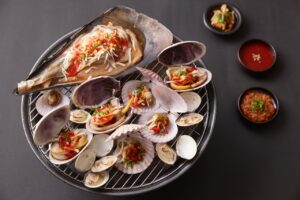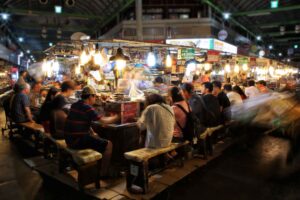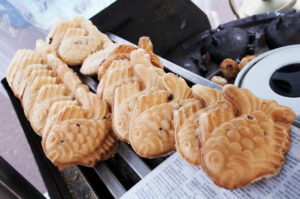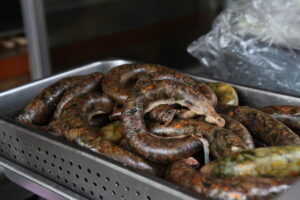
PojangMacha in Korea
What is the Pojangmacha in Korea?
A Pojangmacha(Pocha) is a small mobile restaurant that symbolizes a popular street food culture in Korea. It is mainly covered with tents and sells simple food and alcohol. Pochas are mainly operated in the evening or at night, and are common in Korean cities and tourist attractions.
history
The origins of the Pochas go back to a time when the economy was struggling after the Korean War, when many people began to sell food on the streets for a living, which gradually developed into the current stall form.
## Features
1. **Food Type**:
– ** Snacks ***: Snacks such as tteokbokki, sundae, tempura, fish cake are typical.
– ** Seafood ***: Fresh seafood dishes such as sea bream, mountain octopus, and shellfish are also common.
– ** Grilled meats **: Various grilled dishes such as chicken skewers, beef skewers, and eel roast are served.
– ** Other ***: Snacks such as hokok, chestnuts, and bamboo bread are often seen in Pochas.
2. *** Drinks*:
– **Shochu **: It is the most popular drink in the Pocha.
– ** Makgeolli **: Traditional makgeolli and various flavors of makgeolli are also enjoyed in Pochas.
– ** Beer **: Beer is also available for simple enjoyment.
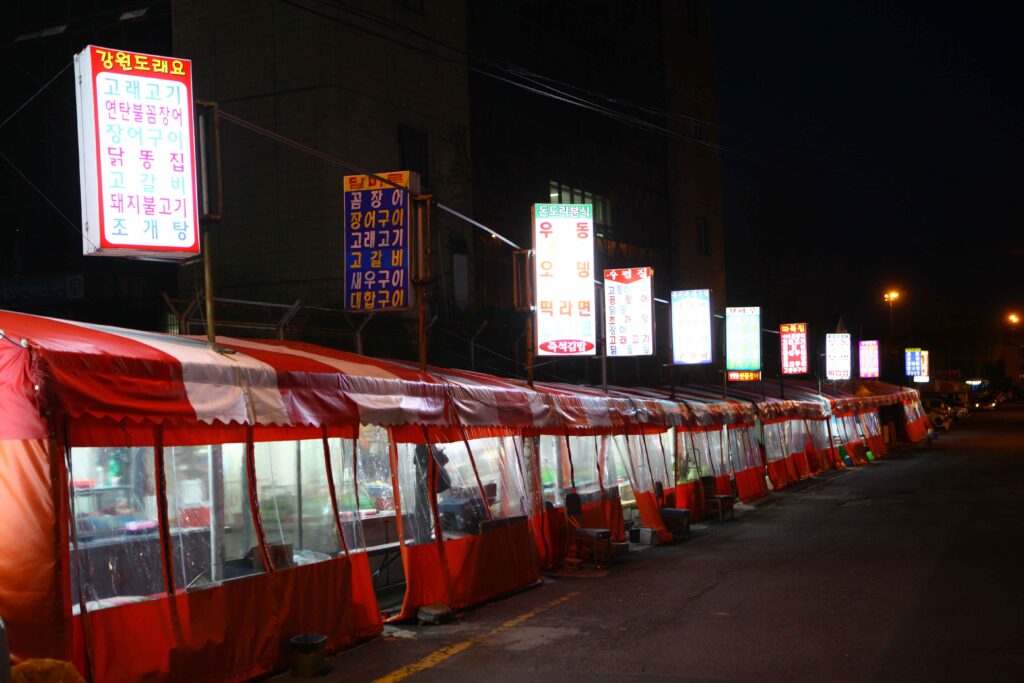
Mood of Pojangmacha?
The stalls boast a friendly and relaxed atmosphere; the seating mainly consists of simple plastic chairs and tables, and many enjoy food in a folksy and casual atmosphere. Here, you can naturally talk to people and enjoy social exchanges.
## cultural meaning
The food stand is not just a place to sell food, it is an important cultural space for Koreans, and it plays a big role as a place to relieve daily stress and hang out with friends and colleagues. In addition, the stall is a place that often appears in Korean dramas and movies, and it is an important element that shows one side of Korean culture.
## Change and Modernization
In recent years, stalls have been changing; in addition to traditional stalls, food truck-type stalls with modern designs and a variety of menus are also emerging, which are becoming popular with younger generations and tourists.
The stalls are an important part of Korean street food culture and everyday life, and they are also very attractive to tourists visiting Korea.
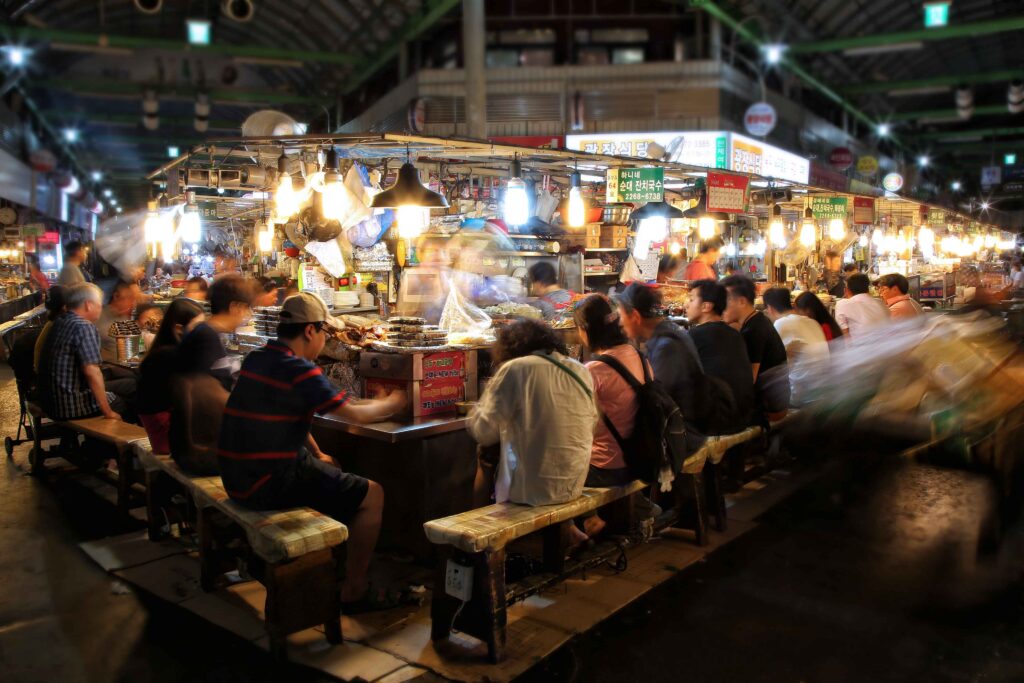
Typical places to experience stalls in Korea are as follows:
Seoul
- ** Plaza Mayor**:
- As one of the traditional markets in Seoul, you can enjoy a variety of stalls and street food, especially Bingdae cakes, sashimi, and tteokbokki.
- *Myeongdong:
- Myeongdong street is the center of shopping and sightseeing, and there are various stalls along the street, so you can taste tteokbokki, hokok, and tempura.
- ** Namdaemun Market **:
- Namdaemun Market is also a traditional market, where you can enjoy cheap shopping with a variety of stalls.
- ** Hongdae*:
- At night in front of Hongdae where many young people gather, stalls line up and provide a variety of food.
Busan
- ** Nampo-dong*:
- It is one of the representative downtown areas of Busan, and various stalls are gathered. Especially, seed hokok and fish cake are famous.
- *Haeundae:
- There are many stalls near Haeundae Beach, especially seafood dishes.
cod
- ** same-sex road*:
- It is the central downtown area of Daegu where you can enjoy food with various stalls.
- ** Preface to Market **:
- One of the largest traditional markets in Daegu, especially the night market is famous, so you can taste various stalls.
Gwangju
- *Chungjangro:
- It is the central business district of Gwangju, where you can easily find street food and stalls.
- ** Yangdong Market **:
- It is a traditional market in Gwangju, where you can experience stalls with various foods.
Incheon
- ** Shinpo International Market **:
- One of Incheon’s traditional markets, you can enjoy shopping with a variety of stalls.
- ** Chinatown*:
- You can taste various stalls and street food in Incheon Chinatown.
Other areas
- ** Jeonju Hanok Village **:
- As a famous sightseeing spot in Jeonju, you can enjoy various stalls with traditional hanok.
- **Jeju Island Alumni Market **:
- It is a traditional market of Jeju Island, where you can taste Jeju specialties along with various stalls.
In these places, you can experience various Korean food stalls, hang out with locals, and enjoy Korean street food culture.
Recommend to Read >> Delicious Gamjatang Recipe: A Spicy Korean Pork Bone Stew – Korean Food Nearby

